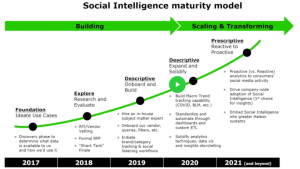— March 29, 2019
Digital enablement is almost everywhere. Nearly all recent conversations I have with customer experience (CX) executives across companies of all sizes and industries involve how they currently use digital channels (e.g., social media, video and messaging), or plan to use them to meet evolving customer needs.
Besides channels, companies look closely at how to enrich their current technology tools with newer capabilities such as machine learning, artificial intelligence and automation. In the midst of such rapid evolution for such capabilities, voice conversations — customer interactions over the phone and interactive voice response (IVR) — are often described as an interaction method that’s being replaced by digital channels.
Between December 2018 and January 2019, Aberdeen surveyed 369 CX executives around the world to reveal the key trends and best practices influencing CX programs in 2019. In this survey, we asked these firms about their current and planned use of phone and IVR as customer interaction channels. Data from this research shows that, contrary to the popular discussion that voice is going away, 76% of firms still use voice (phone or IVR) within their CX channel-mix. What’s more, companies anticipate a 27% increase in phone traffic and 39% increase in IVR traffic in 2019. Only 11% of firms anticipate a decline in phone traffic and a mere 7% anticipate decline in IVR traffic.
Don’t Dismiss Voice Interactions Just Yet
In other words, voice is not going away. It’s evolving. Modern contact centers use voice to address more complex customer issues such as insurance claim disputes or in-depth product questions that require a subject-matter expert to help the customer. Simpler issues such as account balance checks are increasingly addressed through self-service channels. Companies utilizing both voice and automation focus on establishing a seamless connection between all these interactions to ensure the consistency of customer experiences across all channels.
Collectively, the above findings on the evolution of voice across contact centers reveal that digital enablement isn’t a total replacement of voice interactions in favor of digital channels such as email, social media, live chat, or messaging. Rather, it refers to enriching the existing channel-mix that often features voice interactions with digital channels so customers have the option to get their needs addressed through their channel of choice.
Speech Analytics is Key to Voice Efficiency
For businesses that aim to improve their use of voice as a customer interaction channel, speech analytics remains a key enabler. Aberdeen defines speech analytics as “a technology used to analyze customer conversations taking place through phone and / or interactive voice response (IVR) during or after the call.” This analysis can be done through various methods, including phonetic analytics and text analytics — the latter used in transcribing call recordings and real-time conversations with the help of speech-to-text capabilities. Aberdeen’s August 2018 Speech Analytics study shows that the adoption of this technology has increased by 73% between 2016 and 2018 across contact centers.
Our research shows that companies using speech analytics enjoy 67% greater annual increase in customer satisfaction rates and 5 times greater annual improvement (decrease) in the number of customer complaints, compared to non-users. Clearly, incorporating speech analytics within the contact center technology toolbox helps companies improve their CX program results.
Building Blocks of Speech Analytics
Similar to many other technologies, speech analytics doesn’t improve processes overnight — your organization can’t just buy it and expect sudden and long-lasting performance improvements.
To truly maximize performance, contact centers must establish certain building blocks. This includes putting the conversation in context through activities (i.e., determining regular overlaps between the customer and the agent’s voice or acting on the insights derived through speech analytics instead of merely analyzing call recordings).
Specifically, savvy users of speech analytics utilize insights derived through this technology to provide supervisors with relevant insights they need to do their jobs. The same savvy businesses also utilize activities such as automatic call scoring through speech analytics for post-call analysis where supervisors can listen to tagged recordings in order to coach agents.
Are you currently using speech analytics? If so, how did you find the technology influence your performance? To learn more about Aberdeen’s findings on Speech Analytics, please visit Aberdeen.com.
Do you know which specific companies are currently in-market to buy your product?
Wouldn’t it be easier to sell to them if you already knew who they were, what they thought of you, and what they thought of your competitors?
Good news – It is now possible to know this, with up to 91% accuracy. Check out Aberdeen’s comprehensive report Demystifying B2B Purchase Intent Data to learn more.
Business & Finance Articles on Business 2 Community
(51)







